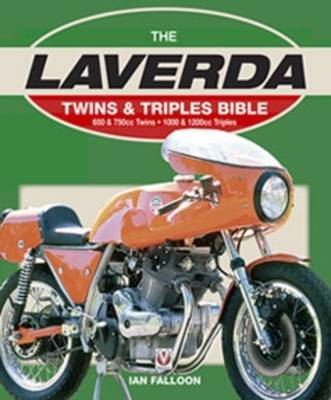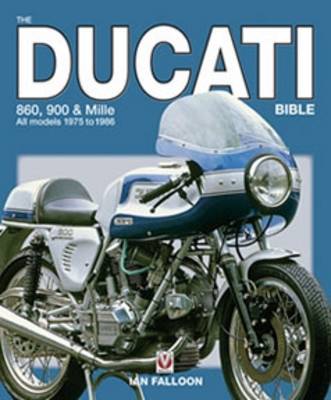Bible
3 total works
Now part of the Aprilia - Moto Guzzi - Laverda group, Laverda has acquired a following of almost fanatical proportions. The large capacity twins and triples were some of the most charismatic and exciting motorcycles produced in a golden era. With a successful endurance racing program publicizing them, Laverda's twins soon earned a reputation for durability that wasn t usually associated with Italian machinery. Originally built for the British market, the 1000cc Jota was the fastest Superbike available in its day. While the twins faded before the end of the 1970s, the triples continued for almost another decade before dying with a whimper. By this time the company was in serious difficulty and went into receivership. Despite a resurrection in the 1990s, it is the classic twins and triples of the late 1960s through until the mid-1980s that Laverda is now famous for.
The bevel-drive 860 and 900 was one of the most significant motorcycles of the late 1970s, providing a unique combination of power and handling that was unequaled by other motorcycles at the time. When Italian car stylist Giorgetto Giugiaro penned the 860GT in 1973 few would have believed it would evolve into one of the greatest Ducati line-ups of all time. The square-case 860 become the legendary 900 Super Sport, Darmah and eventually the Mike Hailwood replica, built to honour Hailwood's spectacular comeback victory at the Isle of Man in 1978. The square-case Ducati engine eventually lasted more than a decade, sustaining the company through a downturn in the early 1980s. This book covers every incarnation of this great model, from the first 860 through until the final Mille. Illustrated with 200 pictures and with complete appendices of technical specifications this book is a must have for any motorcycle aficionado.
When Ducati's great engineer Fabio Taglioni designed the 750 Ducati in 1970 there was no way he could comprehend how important this model would be. His design was unlike any other before or since; a 90-degree V-twin with single overhead camshafts driven by a train of bevel gears. Taglioni soon developed his 750 into a Formula 750 racer, and in 1972 beat the rest of what the world had to offer at the Imola 200. With this victory, the desmodromic 750 became a legend. Ducati responded by producing a hand-built limited production desmodromic Super Sport. They also continued to produce the touring 750 GT and sporting 750 Sport until legislation killed them at the end of 1974. Today, this triumvirate of 750s represents the end of an era; the era before cost accounting and government design requirements. These were among the last pure, unadulterated sporting motorcycles built and it is not surprising they have inspired a new generation of retro classics, the Sport Classic of 2005 and 2006.


